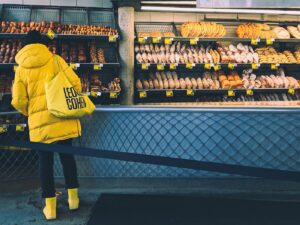A website conversion is getting your shopper do what you want them to do. For example, adding an item to cart, filling a contact form, or placing an order. Many years ago, Meclabs introduced a conversion optimization formula which we would like to present you today.
If you’re not a mathematician, don’t freak out, as this is not a problem you solve in the traditional sense. It’s a heuristic problem, meaning it’s a more concrete way to look at an abstract concept, such as the way we make decisions.
They called it the Heuristic Conversion Optimization Formula and it is expressed like this:
C = 4m + 3v +2(i-f) – 2a
Let’s break down the formula.
C = Probability of conversion
This is the likelihood of achieving your final goal, e.g. sale, download, signup for newsletter, etc, after taking all the other variables into account.
m = Motivation of user
What is it that drives the customer? It is a very important factor in conversion, and that’s why it’s given a weight of 4 in the equation. Visitors may arrive with varying levels of “m”; for example, someone that finds you from a search engine result may have more than one who clicks on a friend’s Facebook link. It’s up to you to move the “m” the rest of the way so they take that action.
v = Clarity (or force) of the value proposition
This is the next most crucial metric, hence the weight of 3, because it centers around value. But this is not just based on the actual worth of what you have to offer, but how clearly you present it to them. It also takes into account the appeal of the product, the exclusivity of your offer, and the credibility of your brand. (You could express this as v = a + e + c.). More about crafting a value proposition.
i = Incentive to take action
This is different from visitor motivation – it’s what you as a vendor bring to the table. What tempting offers are you dangling in front of them that will make them click? Time sensitive discounts or special bonuses can often tilt their action towards a conversion.
f = Friction elements of a process
But, there is almost always friction that is tilting them the opposite way. This friction can be in the form of boring website copy, poor site design, slowly loading pages, long checkout process and other barriers that may prevent them from completing the task.
a = Anxiety about entering information
In addition to more tangible friction elements, there is the potential for customer anxiety about entering credit card or personal information, which is why it gets its own variable with a weight of 2. Anxiety is only relieved through trust, the cornerstone of every e-commerce business. If site visitors don’t trust you, they won’t become clients!
Now that we’ve gone through each of the elements, let’s look at that formula once again:
C = 4m + 3v +2(i-f) – 2a
Does this better help you visualize what goes through every consumer’s mind before a conversion?
If you’d like to learn more about the Heuristic Conversion Optimization Formula and how you can use it to improve your website, talk to a Tavano Team representative today!






